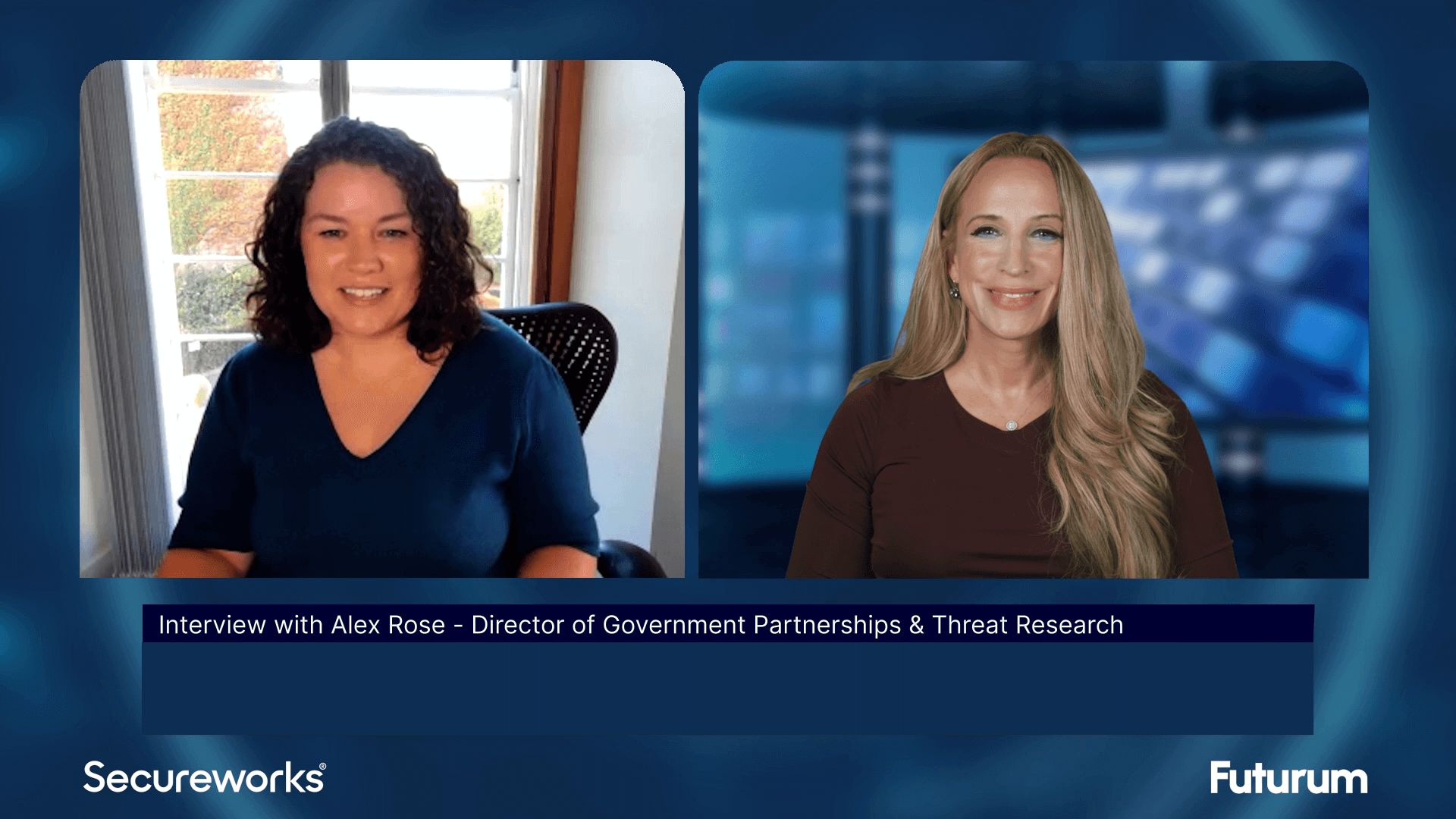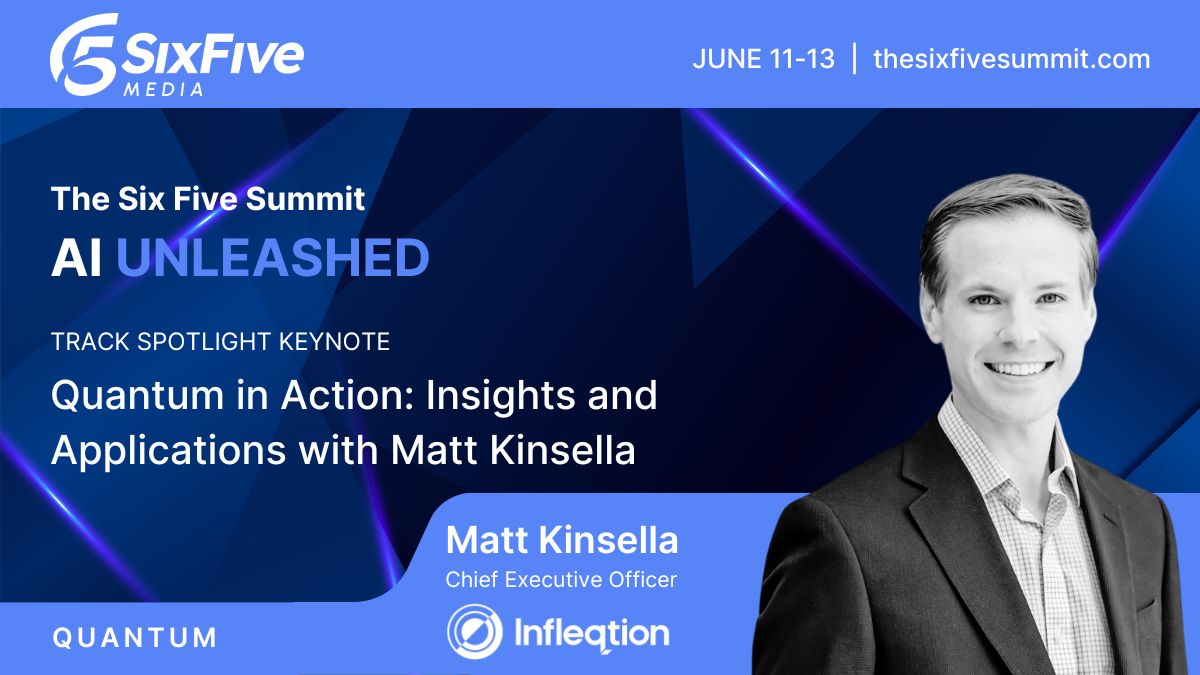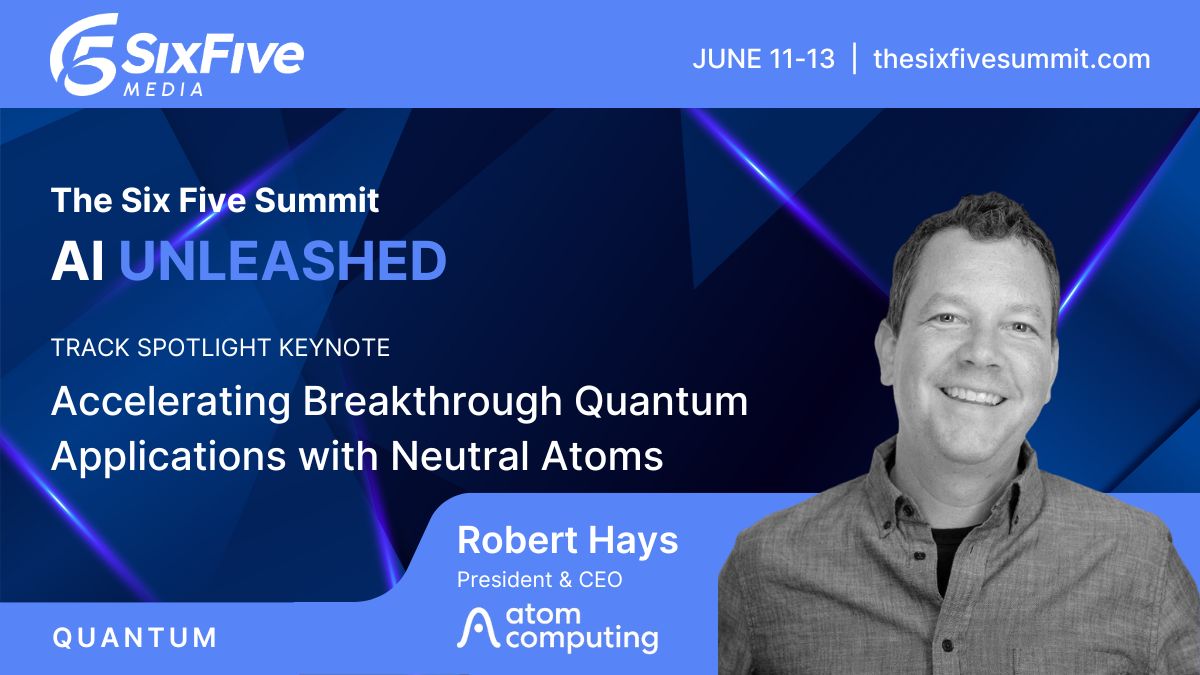Home
Cohesity Gaia Delivers AI-Powered Insights from On-Premises Backup Data - Six Five Media at NVIDIA GTC
Cohesity Gaia Delivers AI-Powered Insights from On-Premises Backup Data - Six Five Media at NVIDIA GTC
Sanjay Poonen, CEO at Cohesity, joins Patrick Moorhead to discuss the extension of Cohesity Gaia to on-premises environments, unleashing AI-powered insights for enterprises.
At NVIDIA GTC 2025, Patrick Moorhead hosts Sanjay Poonen, CEO and President of Cohesity, for a conversation on how Cohesity is extending its enterprise knowledge discovery assistant, Gaia, to generate AI-powered insights from on-premises backup data, and the company's latest advancements since joining forces with Veritas Data Protection.
Key takeaways include:
- Strategic Accelerated Growth: Cohesity is rapidly integrating since bringing in Veritas Data Protection, aiming to operate as a "2 billion revenue startup" with a focus on innovation and customer satisfaction.
- Leveraging NVIDIA for On-Prem AI: Their deepening partnership with NVIDIA enables Cohesity to bring advanced AI capabilities, specifically through the Gaia platform, directly to on-premises data.
- Gaia – Transforming Secondary Data: Cohesity's Gaia platform is unlocking the potential of previously untapped backup data, providing AI-driven insights through search and summarization of unstructured information.
- Championing Hybrid-Cloud Solutions: Cohesity emphasizes the importance of hybrid and multi-cloud strategies, positioning itself as a leader in bridging on-premises and cloud environments for comprehensive data management.
Learn more at Cohesity Gaia.
Watch the full video above, and be sure to subscribe to our YouTube channel, so you never miss an episode.
Disclaimer: Six Five On The Road is for information and entertainment purposes only. Over the course of this webcast, we may talk about companies that are publicly traded, and we may even reference that fact and their equity share price, but please do not take anything that we say as a recommendation about what you should do with your investment dollars. We are not investment advisors, and we ask that you do not treat us as such.
Patrick Moorhead:
The Six Five is On the Road here in San Jose at GTC 2025. I am in the Cohesity booth with my friend Sanjay Poonen. How are you?
Sanjay Poonen:
Pat's great to be here. We've got all the music and fanfare here. It's been great.
Patrick Moorhead:
You know with all the excitement, I have to tell you one thing that I really appreciate about all of this AI wave is that there are a few laws, a few things that are even more important. First, all AI is hybrid.
Sanjay Poonen:
Yes.
Patrick Moorhead:
And the second thing is that data needs to be protected every step of the way. And with AI, data is being used in many different ways, but we will get there. I just needed to get that off my chest. So the last time we chatted was the deal day close with Veritas Data Protection. Can you get us up to speed? How did it go? How's the integration going? What are you hearing from customers?
Sanjay Poonen:
Yeah, no, I think, Pat, it's been about three months since we talked and since we closed the transaction we've come together as one team to organize our go to market our R and D. I've been talking to, you know I set myself a goal to talk to about a thousand customers, mostly Veritas customers. I wanted to talk to them. Well down that path I probably well over 500. Very good feedback from our innovation plans. You know the thing that I've emphasized to our teams and the customers is we're going to move fast. We're going to be a 2 billion revenue startup.
Patrick Moorhead:
Right.
Sanjay Poonen:
So we are very focused on innovation and we're very focused on customer obsession.
Patrick Moorhead:
And you know they say don't ever ask a question that you don't know the answer to. And quite frankly you had a lot of conversations in the run up as you were getting approval for this and everybody, you know, I'm sure you had those conversations and then it does come to execution. So let's, let's swivel to Nvidia here. We're here at GTC. The activity is amazing here. Can you tell us a little bit about the relationship with Nvidia? What have you done so far and what are you announcing here at GTC?
Sanjay Poonen:
Yeah, it was January 2024, last year that I briefed Jensen on what we were doing. He was very impressed. He put it pretty simply. Cohesity backs up the world's data. We want you to build your AI applications like Gaia on top of GPUs and the enterprise AI stack which we agreed to do. And we've had a great partnership. They put money into the company. Our last funding round. They're on our board of observers, Jensen, Steve. So we have a regular, you know, three or four times a year sync up with them. We're very excited about it. We launched Gaia. It works on unstructured data. We started off in the cloud and the big news this year is we're bringing it on- prem so it can now run on HPE or Cisco or Dell type servers and then you can bring all of that stack so that you can take your resident data that you're not ready to take into the cloud and then we're implementing even more capabilities inside that AI stack of Nvidia. So the partnership with Nvidia is going incredible there. We're the only data protection company in our space that has both an investment from Nvidia and is working so strategically with them.
Patrick Moorhead:
No, this is great. And listen, I have been espousing the benefits of the hybrid multi cloud. And I believe that the winners in this next age, you have to operate in the public cloud and you have to operate on- prem. But I would like for you to explain to the audience who might not be familiar with Gaia. What does Gaia do? How does it work? What are the benefits to your customers?
Sanjay Poonen:
Well, the way we named Gaia, we were building a generative AI app, a generative AI agent and the code name was Generative AI app Gaia and we just stuck the name because it also happens to be the Greek goddess of wisdom or something like that. It's a very simple agent or app by which you can search and summarize anything in your backup data, primarily unstructured data. So let me give you an example. Imagine you have 200 million contracts that are in backup and they represent all the contracts you've done over the history of your time. And you want to summarize all the economic terms you've given your vendors over the last 10 years. Please summarize in a table all the economic terms, discounts your length of duration and it buzzes just like you would do a ChatGPT. It goes, gets that data out, builds a vector database on the fly and then summarizes it with some call to a LLM of your choice. That all happens to the cloud. Today we've taken that cable on-prem. We think the use cases of that are primarily unstructured data files, images, maybe in the future structured data we'll get to later on. But legally discover a variety of places where you're looking for contract document discovery. This is the first time you can use AI to get insights on your backup data. In the past backup data was like this tape. In the past it was literally a tape. We're making that tape now a link.
Patrick Moorhead:
Let me ask you this. As a user I'm curious how enterprises have live data or we'll call it fresh data and you have backup data. How do they orchestrate? Does the user have to know, hey, this is in backup data or is there a way a system can just know it does a search on all contracts. Some of it might be more recent data, some of it might be in backup. How does that work?
Sanjay Poonen:
Yeah, we don't expect to be the tool of choice for search. It could be an Amazon queue, it could be a copilot, it could be Google Gemini. In fact we announced an integration with this small company called Glean. Yeah, we could feed the back. We are the receptacle repository of all backup data in the world. If we're successful for customers who want to search that data, we will have a search capability inside Gaia, but we will also be an API mechanism to feed Amazon, Bedrock or Google. They're going to call it Agent Space, I think they used to call it Google Spark or Glean. So think of us as like a large snowflake or databrick. Unstructured data in the hundreds of petabytes. Exabytes. Hundreds of exabytes. That data now is visible either through a tool we build called Gaia or we will expose it through APIs to somebody else. We could feed into databricks, we could feed into Glean, Gemini, Google, Amazon Q, Bedrock. There are a lot of possibilities, so we don't have an opinion that we have to be the search tool of enterprises.
Patrick Moorhead:
Right, you could be part of it. Through API’s.
Sanjay Poonen:
We want to be the choice of all secondary. We want all of the world's secondary data, backup data to be in our platform. And this provides you now the ability to access that data.
Patrick Moorhead:
Okay, so where are we on this map section which is Gaia, Gaia Cloud and Gaia on-prem, where is that in the state of development and customer availability?
Sanjay Poonen:
So the cloud is already available. Built on the underneath of leveraging the Nvidia stack on Prem is coming out in a couple of months, so middle of this year I think, and we have a lot of customer interest. Actually, I think the on-prem part surprised us. I thought it would be heavily cloud. There are a number of customers who are reluctant to send their large backup data into the cloud as yet.
Patrick Moorhead:
Sure.
Sanjay Poonen:
So I think that this is. And you're going to hear us do more even with Google. Stay tuned. The Google conference is coming up next month, so there's more coming out there with Thomas and that team. So you should expect us to do a lot of work with four companies. Nvidia, Amazon, Google, Microsoft.
Patrick Moorhead:
I would say those are four good, large, impactful companies.
Sanjay Poonen:
And the way they deploy theirs onto on-prem servers like HP, Cisco, Dell and others.
Patrick Moorhead:
By the way, I think you're helping, right? You're helping those companies extend pretty much everywhere. Again, back to hybrid multi cloud enterprises. Don't want to do business with companies in the future that only do cloud or they only do on-prem. They want both because that's the reality. And as much as we sometimes forget that this is what they want. So final question on Gaia, are there any customer stories you can share that you're most proud of of your customers using Gaia in the cloud.
Sanjay Poonen:
Yeah, I think what we find, most of them are less comfortable with us talking about them by name as yet.
Patrick Moorhead:
Sure.
Sanjay Poonen:
Because some of the stories are sensitive. But these are companies who have large amounts of documents, some in the public sector. There's a European customer public sector we're working with that collects a lot of documents from the government and they want to be able to search and summarize. Another company has got all their historical notes from meetings. They want to search and summarize. So what we're finding is typically large amounts of unstructured data and they want to search and summarize it. Okay, that's it. Legal firms that are talking about E discovery. And then we're starting to see some early cases in various different verticals. Oil and gas. And then maybe even the medical industry we've got a few early conversations with. So my hope is to cover a number of the horizontal use cases that are repeatable in every industry. Legal, document search. And then we'll start getting into seismic data, quality of records and telco, financial consumer loan documents. But at the end of the day, it really is that very simple. Unstructured data, text and images.
Patrick Moorhead:
Right.
Sanjay Poonen:
And being able to search that without. In the absence of a tool like this, what you typically do is you take that data out of backup. It's a process called rehydration.
Patrick Moorhead:
Yeah.
Sanjay Poonen:
And then you build a rag tool on top of it. This circumvents that step altogether.
Patrick Moorhead:
Oh, this is great. So great Gaia conversation here. You gave us a little bit of a. Make sure you check out Google Cloud next. I appreciate it. What does the rest of the year look like for you? What are your…no inside baseball required, but you've committed to the board and investors. This is what I want to get done. What can you share with us for the rest of 25?
Sanjay Poonen:
We, you know, ultimately want to create a 5 billion revenue company. Right now we've gone from number seven in the space to number one
Patrick Moorhead:
It’s a large startup.
Sanjay Poonen:
We want to be a $2 billion startup. Right. So we're on a run rate to get to 2 billion revenue. Hopefully soon as we do that, we want to then make our next milestone 5 billion. Somewhere along the way is a possible IPO. We're going to think through when that time is. But to create profitable growth, a rule of 40 companies, nobody in our space right now is that rule of 40 growth and free cash flow margin. So at our scale, there's some who are doing very well. But much smaller than us. And then we want to just take the customer base we have and nail industries. Like right now in financial services, almost every one of the largest banks are our customers working very closely with them. Same with public sector, telco, manufacturing. And then with each of these important partners, I would say the one that I'm most interested in are some of these cloud and hardware partners. Amazon, Google, Microsoft, Nvidia, HP, IBM, Cisco, Dell, all the ones that are on the cloud and hardware side. And then we're working with the system integrators, the bars, the SI’s. And I think that the evolution of this is some intersection of security and AI on data. So think, think of us as you imagine a Palo Alto meets Snowflake or Crowdstrike meets Databricks. For secondary data, that's us. And I think, you know, if you look at those companies, they're all on their path to five or ten billion dollar companies. We should be able to do the same for secondary data. Primary data is like the top of the iceberg. Secondary data is like the bottom of the iceberg. That's where we live.
Patrick Moorhead:
No, this is great, Sanjay. I appreciate your time and I appreciate us being able to connect the dots. For the viewers who last saw us at Veritas close day, it sounds like you're making a lot of progress. I mean, listen, you're a guy who is happy but never satisfied in moving this forward and it sounds like you're doing that today. It's funny, I look back at Gaia, it looks like, oh well, of course we would do that. But what you're doing is literally lighting up data that gets forgotten about that nobody used before and being able to bring that in the age of generative AI. So working so far and looking forward to the future.
Sanjay Poonen:
And now, Pat, my job is to allow you to explain Gaia without me in the room.
Patrick Moorhead:
No, I know. And we've done this.
Sanjay Poonen:
That's awesome.
Patrick Moorhead:
And you've made it so simple that I hope most people I know, there's a lot of details below that, but.
Sanjay Poonen:
You don't need to.
Patrick Moorhead:
I don't need to. I'm the value prop guy, totally. For enterprises. Thank you very much.
Sanjay Poonen:
Appreciate it.
Patrick Moorhead:
This is Pat Moorhead and Sanjay Poonen here at GTC 2025. We are talking on-prem, Gaia in the hybrid cloud. Of course you have to be on-prem and cloud. That's the wave of the future. And if you're not there, people aren't going to want to buy your stuff. So check out all of our Cohesity content out there and also everything we're going to be talking about here at Nvidia GTC 2025. Take care. Hit that subscribe button.
Other Categories
CYBERSECURITY

Threat Intelligence: Insights on Cybersecurity from Secureworks
Alex Rose from Secureworks joins Shira Rubinoff on the Cybersphere to share his insights on the critical role of threat intelligence in modern cybersecurity efforts, underscoring the importance of proactive, intelligence-driven defense mechanisms.
quantum

Quantum in Action: Insights and Applications with Matt Kinsella
Quantum is no longer a technology of the future; the quantum opportunity is here now. During this keynote conversation, Infleqtion CEO, Matt Kinsella will explore the latest quantum developments and how organizations can best leverage quantum to their advantage.

Accelerating Breakthrough Quantum Applications with Neutral Atoms
Our planet needs major breakthroughs for a more sustainable future and quantum computing promises to provide a path to new solutions in a variety of industry segments. This talk will explore what it takes for quantum computers to be able to solve these significant computational challenges, and will show that the timeline to addressing valuable applications may be sooner than previously thought.







